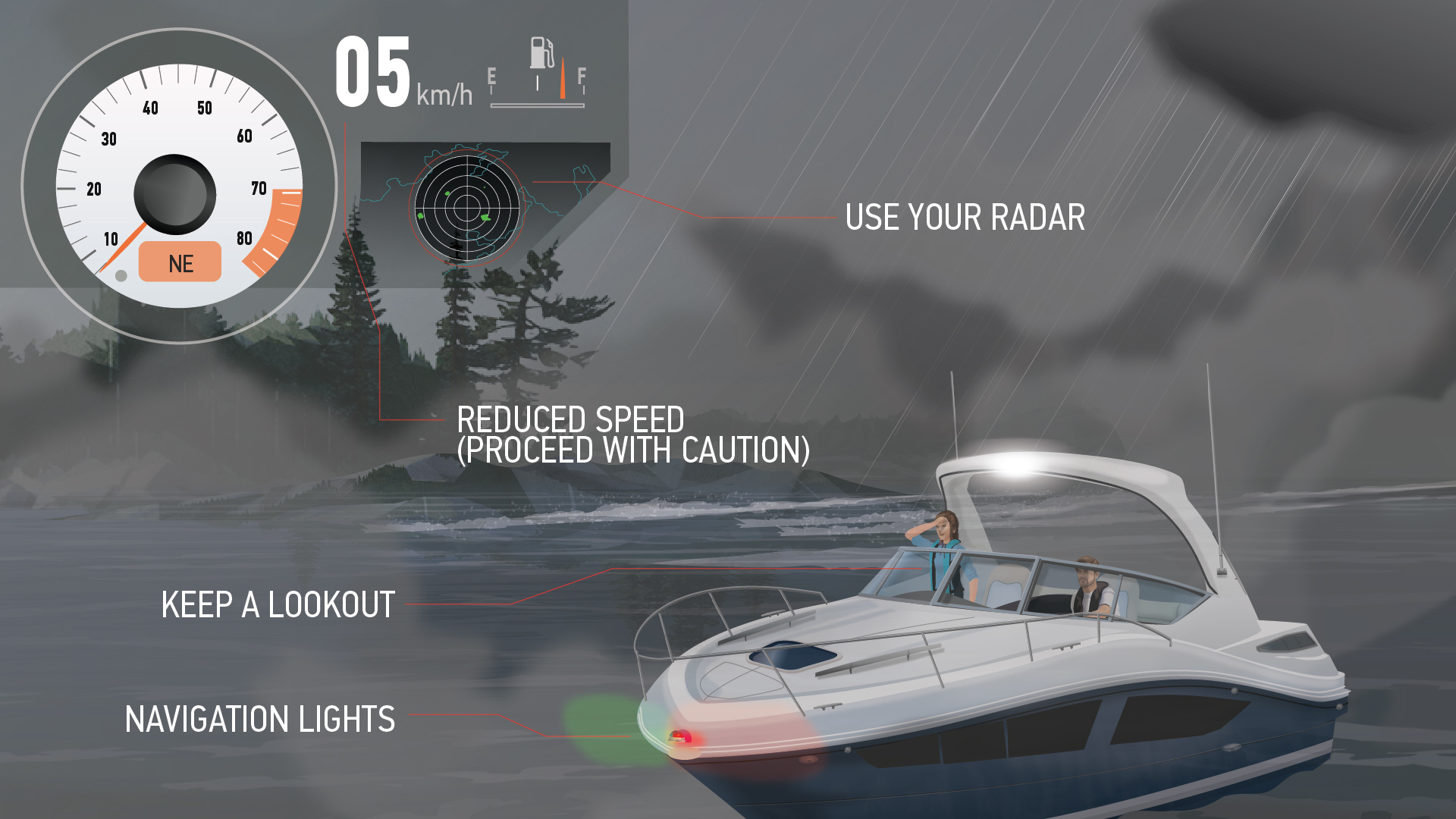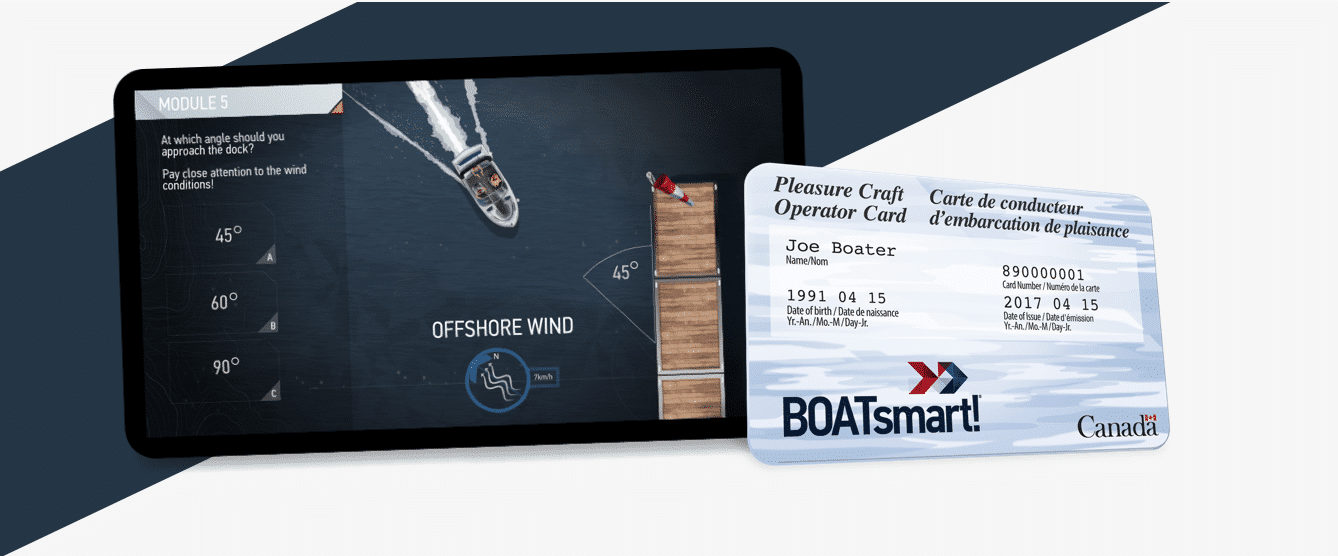BOATsmart! Canada
Knowledge Base
Module 04 - Safe Boat Operation
Handling Rough Water Conditions

If you’re caught in rough water conditions you must adjust your boat’s speed, depending on how rough the waters are. Always slow down and use caution. Never attempt to jump waves, and always adjust your speed so that the bow of your boat doesn’t plow into the waves.
If you find yourself in increasingly high wave conditions, you should make your way to a sheltered area, such as a protected bay, cove, or breakwater. If wave and water conditions make it impossible to operate safely, immediately set anchor and signal your need for help.
Operating in Bad Weather:
When operating in bad weather there is an increased risk of collision with other boat traffic. Maintaining control of your boat becomes more challenging, and it can be difficult to see other boats on the waterway.
Use the following techniques to avoid collisions in bad weather:
- Proceed with caution: Ensure that you’re able to stop quickly if necessary
- Keep a lookout: If you have passengers (guests) onboard, place them near the bow and stern as lookouts. You and your passengers (guests) should ‘look out’ for other boats and navigational aids by both sight and hearing.
- Navigation lights: Turn on your boat’s navigation lights during periods of restricted visibility to ensure that other boats can spot you on the water.
- Turn off your engine: If you are underway in heavy fog, stop your engine from time to time to listen for fog signals from other boats.
- Use your radar: Radar is your best option when there is poor visibility– if you have a radar reflector it should be used during periods of restricted visibility


Get your Official Canadian
Boating License
The Official Transport Canada Boating Course, Test & License.
Get your Official Canadian
Boating License
The Official Transport Canada Boating
Course, Test & License.



